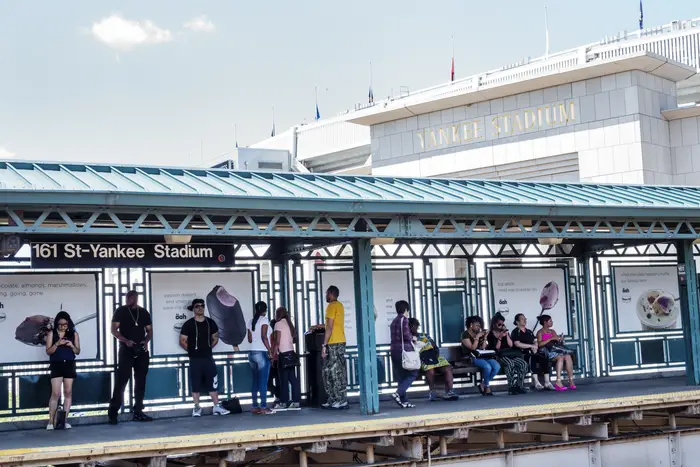
UPDATE: The Metropolitan Transportation Authority (MTA) has just announced a significant subway signal upgrade plan that notably excludes the Bronx, raising urgent concerns among residents. While the MTA aims to invest $10.8 billion to enhance service across 162 miles of subway tracks, Bronx commuters are left without improvements to their critical transit infrastructure.
Officials confirmed that the subway’s outdated signal system, much of which relies on 1930s technology, is being targeted for modernization. Yet, all upgrades are set for Brooklyn, Manhattan, and Queens, with no resources allocated for the Bronx. This exclusion has sparked frustration among Bronx residents, who have long felt neglected by transit authorities.
“I think the Bronx is forgotten about,” voiced commuter Randy Batista, reflecting a sentiment echoed by many in the borough. Lifelong Bronx resident Adinah Benzion added, “It’s obvious that the MTA invests less in Bronx commuters. While Manhattan sees significant upgrades, the Bronx is left behind.”
With asthma rates among the highest in the nation, largely due to pollution from nearby expressways, Bronx residents heavily depend on public transit, with car ownership rates lower than all boroughs except Manhattan. Yet, the MTA’s current plans fail to address their needs.
Jamie Torres-Springer, MTA construction chief, disputed claims of neglect, highlighting that 19 stations in the Bronx will become ADA accessible in the coming years, effectively doubling the number of accessible stations. However, he acknowledged that no signal upgrades are planned for the borough, attributing this to the need for new train cars capable of utilizing the upgraded technology.
“The priority is to replace the oldest signal equipment,” Torres-Springer explained, stressing the urgency of upgrading systems that are as old as 80 years on key lines like the A and C. “This will ultimately improve service for everyone, including Bronx residents.”
While the MTA cites the $3.1 billion Penn Access project, which will add four new Metro-North stops connecting to Penn Station, as a significant investment for the Bronx, residents continue to call for improvements in subway services. “It’s not a surprise that the Bronx is not going to be part of these new signal upgrades,” noted Ed Garcia Conde, a Bronx history expert. “Whether it’s transportation equity or anything else, we’re always considered the last.”
As the MTA moves forward with its upgraded signal plans, the absence of Bronx projects remains a critical issue. Residents and advocates are urging the agency to reconsider and prioritize the needs of the Bronx, as they simply seek more reliable and frequent service.
Stay tuned for more updates on this developing story as the MTA’s plans unfold.





